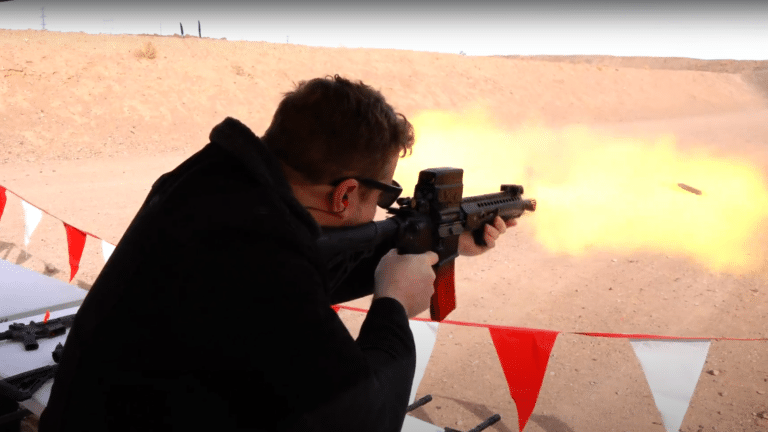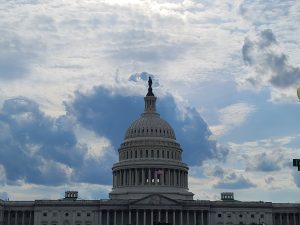Merely possessing a machinegun is not a crime, according to one federal judge.
US District Judge Carlton Reeves dismissed charges against Justin Bryce Brown, a Mississippi man with no prior criminal record, over his ownership of an unregistered machinegun last week. He found the federal law effectively banning the sale and possession of new production or unregistered machineguns was unconstitutional as applied to Brown’s specific circumstances. He argued the Supreme Court’s ruling in 2022’s New York State Rifle and Pistol Association v. Bruen required him to reach that conclusion.
“The controlling standard of the moment requires this Court to ‘determin[e] the contours of acceptable prosecutions through the resolution of continual as-applied challenges,’ based on the evidence and arguments before it,” Judge Reeves wrote in US v. Brown. “Under that standard, Mr. Brown’s as-applied challenge is sustained. His motion is granted and the case dismissed.”
While the ruling does not invalidate the law wholesale since it only impacts the specific charges against Brown, it does create significant doubt about its constitutionality–at least as applied to any otherwise law-abiding American. If other federal judges agree with Reeves’ assessment, the decision could pave the way for future courts to throw out the federal machinegun ban altogether. It may also help establish a firmer standard for which weapons are, and aren’t, considered in “common use” and, therefore, protected by the Second Amendment under the Supreme Court’s controlling precedents.
Reeves, an Obama appointee, worked through the Bruen standard to decide the case. He said the government’s argument that the Second Amendment doesn’t protect full-automatic weapons because they are “dangerous and unusual” didn’t pass muster.
“Bruen nevertheless tells us that there is an American ‘historical tradition of prohibiting the carrying of ‘dangerous and unusual weapons.'” he wrote. “That is the law to be followed. The ultimate problem for the government, then, is this: although machineguns are ‘dangerous,’ it does not explain how machineguns are unusual.”
Revees said revolvers and semi-automatic weapons are also dangerous. However, he noted the Supreme Court had already established they can not be banned because millions of Americans own them for lawful purposes. He said the same standard applies to fully automatic weapons.
“Machineguns are even more dangerous,” Judge Revees wrote. “There’s no dispute about that. But the above examples illustrate that dangerousness is not the end of the matter, because firearms can be dangerous and constitutionally protected. Instead, the government has the burden to prove that the firearm to be restricted is both dangerous and unusual.”
He argued the evidence presented in the case showed machineguns are far from unusual. He noted Brown provided an estimate that over 740,000 machineguns were in circulation in the United States based on ATF data. He said since the government did not dispute that number or provide its own estimate, he would use it as the best available to him. And, while that number is only a small fraction of the hundreds of millions of guns estimated to be in civilian hands, it represents enough of a pool to fall under Second Amendment protection.
“Seven hundred and forty thousand is no small number,” Revees wrote. “The government presents no argument or explanation for why such a large figure is somehow not common.”
Revees work on Second Amendment challenges in the wake of the Bruen decision has been prolific.
In June 2023, he tossed out gun possession charges against a man who had been convicted of manslaughter decades earlier. He ruled that the government failed to meet its burden under Bruen in that case as well.
“The government’s arguments for permanently disarming Mr. Bullock, however, rest upon the mirage of dicta, buttressed by a cloud of law review articles that do not support disarming him,” Judge Reeves wrote in United States v. Bullock. “In Bruen, the State of New York presented 700 years of history to try and defend its early 1900s‐era gun licensing law. That was not enough. Bruen requires no less skepticism here, where the challenged law is even younger.”
In July 2024, he struck down the federal gun ban for illegal immigrants–at least as applied to the defendant in that case. Using the same Bruen analysis, he determined that undocumented immigrants are “presumptively protected” by the text of the Second Amendment. He argued the government would only be able to justify disarming the defendant in US v. Benito if he were found to be dangerous because the Supreme Court only endorsed “the principle that American history and tradition support disarmament of dangerous persons.”
“But Mr. Benito has never been convicted of a crime, much less a dangerous crime, so he can’t be disarmed yet,” he wrote.
Revees also chastised the government for its lack of effort in defending US v. Brown.
“Most of the government’s citations for these arguments are judicial decisions that predate Bruen,” he wrote. “Many of its remaining claims, which focus on the benefits to public safety of a machinegun ban, are policy arguments entitled to no weight. Bruen held that ‘the Second Amendment does not permit … judges to assess the costs and benefits of firearms restrictions under means-end scrutiny.'”
He said the government relied solely on precedent from Hollis v. Lynch, which he argued is outdated.
“Here, the government made no attempt to present facts and figures. It placed all its eggs in one basket—the notion that Hollis is still good law. Hollis, however, may not be good law. The Fifth Circuit says Bruen‘ render[s] our prior precedent obsolete.’ Obsolete means’ no longer useful’ and ‘replaced by something newer.’ The Fifth Circuit also tells us it has ‘abandon[ed] that prior precedent.’ In other words, the appellate court has ‘give[n] up’ and ‘withdraw[n] from’ enforcing that precedent.”
Revees has consistently applied Bruen favorably to defendants challenging gun restrictions. However, he has also consistently criticized the standard itself.
“Bruen specifically requires judges to follow ‘history and tradition,’ evaluate whether new laws are ‘relevantly similar’ to past laws, and determine whether certain firearms are ‘dangerous and unusual.'” he wrote. “These tests are deeply concerning to many. They will continue to generate ‘confused and confusing lower court precedent.'”
He argued the High Court’s current Second Amendment jurisprudence is the result of a lack of trust, though.
“At their core, the Supreme Court’s recent Second Amendment cases are predicated upon a lack of trust. The Heller, McDonald, and Bruen decisions did not trust that local and state lawmakers had protected their citizens’ Second Amendment rights, or would protect them going forward. The decisions also expressed doubt that federal courts were doing enough to protect those rights. New boundaries were set. They used history as the first and most important test of legality, as if history would be a more trustworthy and reliable guide to constitutional law.”
However, Revees also said the Supreme Court’s standards would ultimately lead to a further decline in trust of the court itself.
“The ultimate irony is that the version of history endorsed in these (and other) decisions has itself been deemed untrustworthy by actual historians,” he wrote. “[U]nfortunately, the lack of trust inherent in these decisions cannot be untangled from the public’s declining trust in Article III itself.”
Still, he said he was obligated to follow the Bruen standard regardless of his personal opinion on its wisdom.
“As one of those tasked with applying these new tests, this Court understands the confusion. It feels the frustration,” Judge Revees wrote. “But its doubts and the discourse, no matter how serious or justified, cannot deter it from faithfully applying the law, even if that application is later found to be erroneous.”






